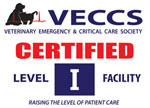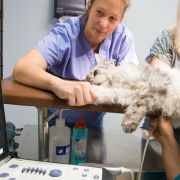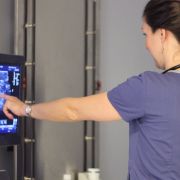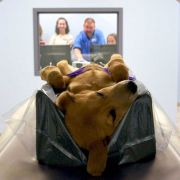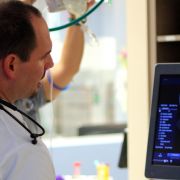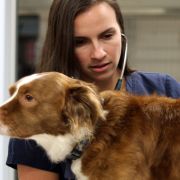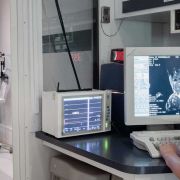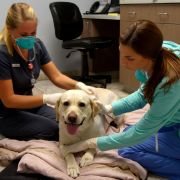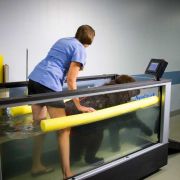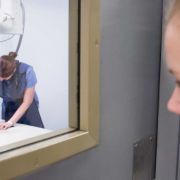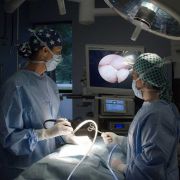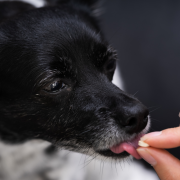Date:
By Alan Green
Although greyhound racing is a controversial topic, the fact is that as long as it exists, it is important to have doctors that are experienced and understand the unique nature of these noble and magnificent dogs, and their injuries.
Like any athlete, they need the very best care possible due to sport specific injuries. I am proud to reintroduce our surgeon, and this month’s contributor, Dr. Jennifer Au. As a former assistant professor at Ohio State University and current role as surgeon at CVRC, her experience with greyhounds, as well as all aspects of orthopedics is unsurpassed in our region.
Have you ever seen a greyhound puppy? Not many have. Greyhounds are a breed typically acquired through rescue rather than purchased from a breeder. Most of the rescued greyhounds come from the race tracks once they have finished their racing careers or their career was prematurely ended through injury. Due to the circumstances of the racetrack, greyhounds have a unique set of injuries that can result in the end of their racing career. The Ohio State University is known to many greyhound lovers as a mecca for greyhound care due to the research and number of greyhound cases seen there. While at OSU, I was privileged enough to learn about this noble breed, their unique personalities and quirks, along with their unique injuries and fractures not typically seen in other breeds.
Because the dogs race in a counterclockwise direction, a large amount of stress is borne on the right side, more specifically the inside of the right front and rear leg. In the front leg they can develop medial (inside) radial (one of the paired bones of the forelimb) stress micro-fractures, which may lead to fracture with continued racing or blunt trauma to the area such as hitting the starting gate coming out of the chute. Another common injury in the right front leg is a fracture of the accessory carpal bone, similar to one of the bones in our wrist. The tendons and ligaments inserting on the accessory carpal bone are under such stress during a race they will literally pull the bone apart resulting in fractures. Rarely can the fractures be repaired directly since they are so small; instead the “chip” is removed to prevent further irritation to the surrounding tissues and joint.
In the rear leg, the tarsus or hock is very susceptible to injury. The tarsus is similar to the bones in our foot below the ankle. Again, due to the counterclockwise direction of the track, the inside of the right tarsus is a common victim. The central tarsal bone, fails to withstand the pressure and collapses or fractures. It can be the only fracture but, more often, it creates a domino effect. Occasionally, the fractured bone can be fixed, typically, with surgical stabilization using screws. However, most of these fractures involving more than one bone require plating or fusing of the small joints in the tarsus.
Not all track injuries are due to the stress and overload of running in a counterclockwise direction day after day. Injuries can also occur due to direct trauma when a greyhound, not always the most graceful, slams into the metal chute or another dog on the track. In those situations, any number of injuries and fractures can occur to the left or right side of the dog.
Although the greyhounds do great with these types of surgeries and can return to running and playing, it is enough of a setback that it typically prevents them from returning to racing at least at a level worth maintaining, if your goal is winning races. As a result, very few owners/trainers of the racers are willing to invest in the surgical care of these dogs, resulting in either euthanasia to end suffering, or devoted greyhound rescuers stepping in to help with the dogs. Many in these rescue groups work to get injured dogs from the track to the appropriate veterinary facility for care, raising money for their medical needs through donations and fund raising. Since these injuries are not common among the general dog population, it helps to have a veterinarian and surgeon with experience in uniquely greyhound injuries.
If you are interested in fostering a wonderful greyhound or giving it a “forever home,” consider contacting the local chapter of Greyhound Pets of America Charleston Chapter at [email protected]. If you already have a special greyhound friend, you already know how special and unique they are. If they are in need of special care, we are here for you at Charleston Veterinary Referral Center.



